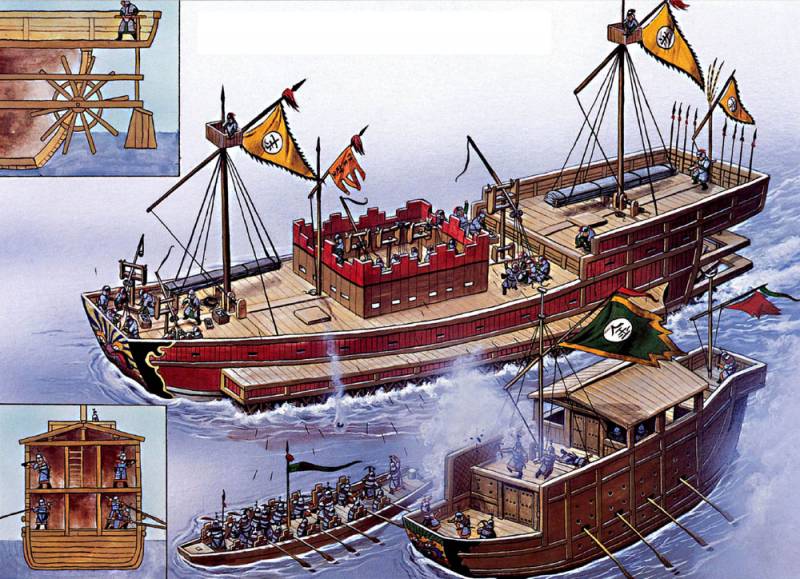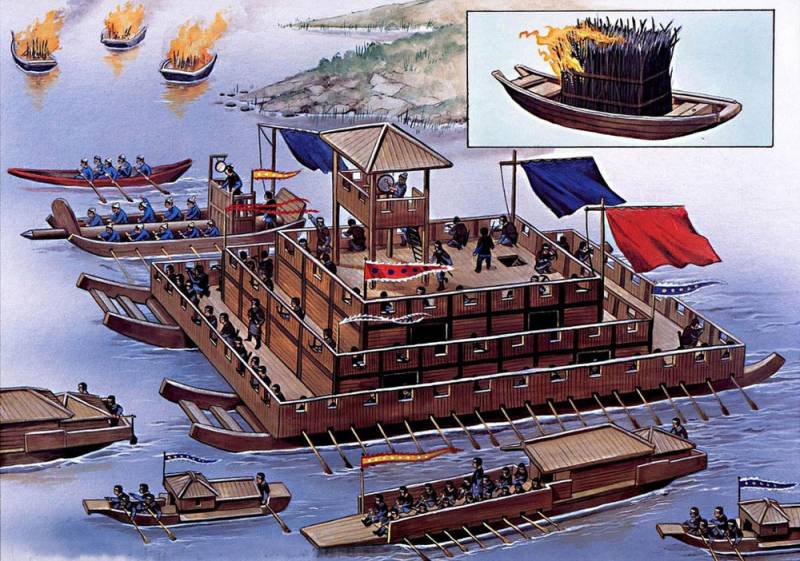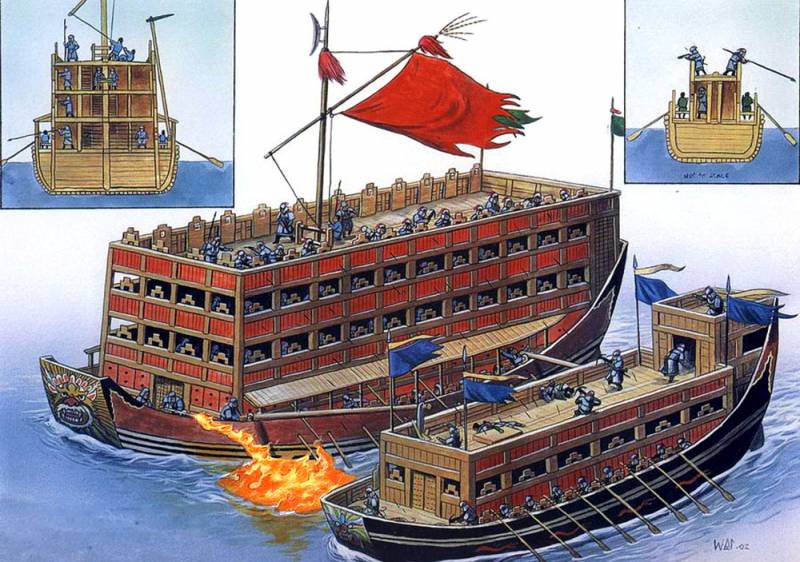In China, everything is big
October 4 The 1363 of the year, according to Chinese historians and chroniclers, ended the largest in number of participants and the longest in time naval battle in the world stories. More precisely, not sea and lake, as it occurred on the largest lake in China Poyang area of over three thousand square kilometers and lasted more than two months.
The battle was attended by fleets of two contenders for the Chinese throne - the former fisherman Chen Yulian and the former peasant Zhu Yuanzhang. It is interesting what happened at the height of the national liberation struggle against the Mongolian conquerors, and Chen Yulian and Zhu Yuanzhang were the leaders of this struggle.
However, after the first successes and the liberation of vast territories in the south of the country between colleagues, as it often happens, bickering broke out for power, which resulted in a bloody internecine war and made me forget about the Mongols for a long time.
The battle was preceded by a long but unsuccessful siege by the army and fleet Chen Yuliang, located on the shore of Lake Poinhu, the city of Hundu, in which supporters of Yuanzhang settled. During this siege, the troops of Chen Yulyan lost about 50 thousand people from the initial strength of 650 thousand killed, wounded and sick. The rest were severely worn out and suffered from food shortages, which played an important role in the future battle.
At the end of July 1363, the fleet of Yuanzhang came to the aid of the Hundu garrison, consisting (again, according to Chinese historians) of almost a thousand sailing-rowing ships with a total number of teams in 250 thousands. Seeing the approach of the enemy, Chen Yulian also put almost all his people on the court and spoke out to meet.
Thus, the number of soldiers and sailors on his ships exceeded half a million people, and the total number of participants in the battle reached 750 thousands! Against this background, Trafalgar, Navarin, Jutland, Tsushima and Lepanto look like small skirmishes.
The ships themselves were huge, by the standards of that time, three-four-deck "floating fortresses" with high rifle towers, which housed archers, crossbowmen and artillerymen. The number of crews of these monsters reached two thousand people. The fleet of Chen Yulian fought under the red flags, and his ships were painted red.
The fleet of Yuanzhang consisted of smaller, but more maneuverable, mainly double-deck ships painted in white paint, on which incendiary was widely used. weapon. In particular, many ships were equipped with so-called "moi-nai-chi" - long beams hinged to the masts, at the ends of which hung reed baskets filled with combustible mixture. When approaching the enemy vessel, the beam was turned towards him with the help of ropes, the basket was ignited by incendiary arrows and fell onto the deck, creating a large source of fire.
With the help of these devices, as well as incendiary rockets, hand grenades and firefighters, the sailors of Yuanzhang already on the first day of the battle, August 1, managed to burn several enemy ships. They themselves also suffered losses, but much lower.
In the future, contractions took place almost daily. Sometimes it came to the boarding, in which individual ships several times passed from hand to hand. According to the Chinese historian Wu Han, the climax of the battle came on August 30, when the fleet Chen Yulian lost several dozen ships and up to 60 thousands of fighters, and seven thousand people died in the Yuanzhang fleet.
Chen Yulian's people became increasingly weak from hunger, because the high-speed junks of Yuanzhang cruised on the lake and blocked the delivery of food to the enemy, seizing transport ships. At the end of September, several ships of Chen Yulian surrendered, but the rest continued to fight, although there were very few of them left and the outcome of the battle was no one in doubt.
Finally, on October 4, Chen Yulian, looking out of the window of his cabin, received a crossbow arrow in the face and died that very day. This served as a signal for the surrender of the remaining ships of his fleet. The largest battle on the water, in which several hundred thousand people died, was over, and the death of Chen Yulian marked the end of the civil war. All the anti-Mongolian forces of China united under the command of Yuanzhang, who in 1368 declared himself emperor, becoming the founder of the Ming dynasty. But that's another story.
Next are the drawings of Chinese battle coables from the time of the Poyang battle. Interestingly, the top has a wheel propulsion. How much is real - decide for yourself.




Information